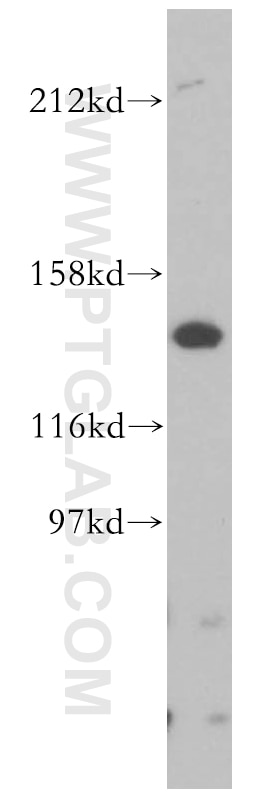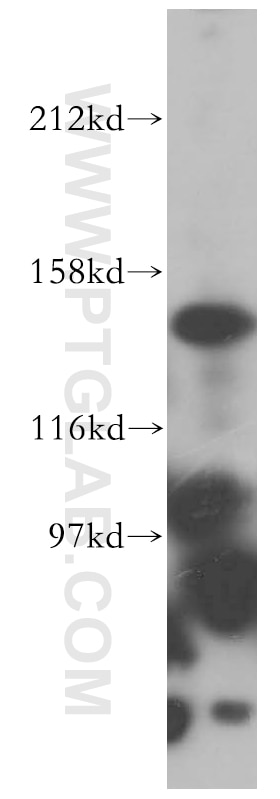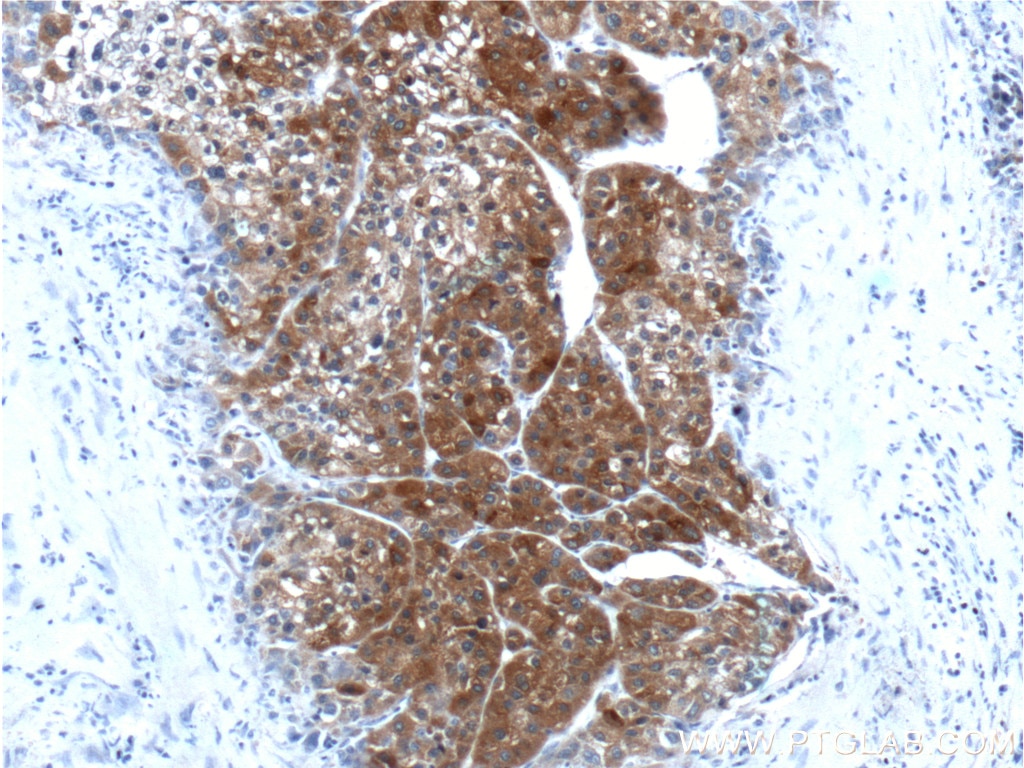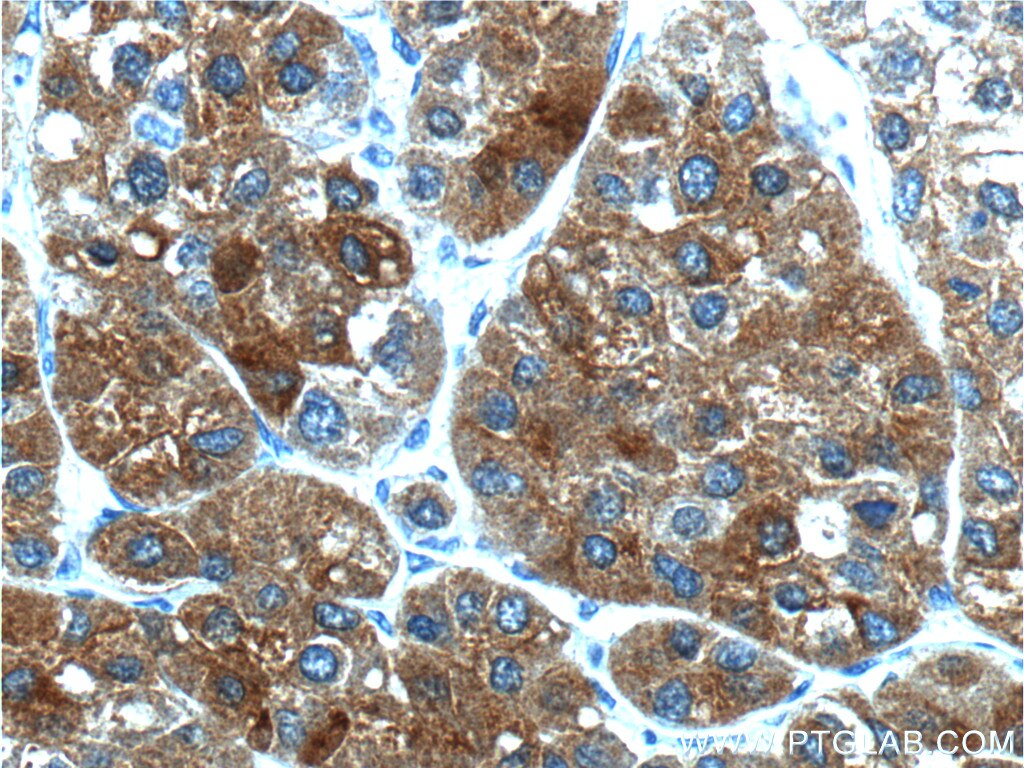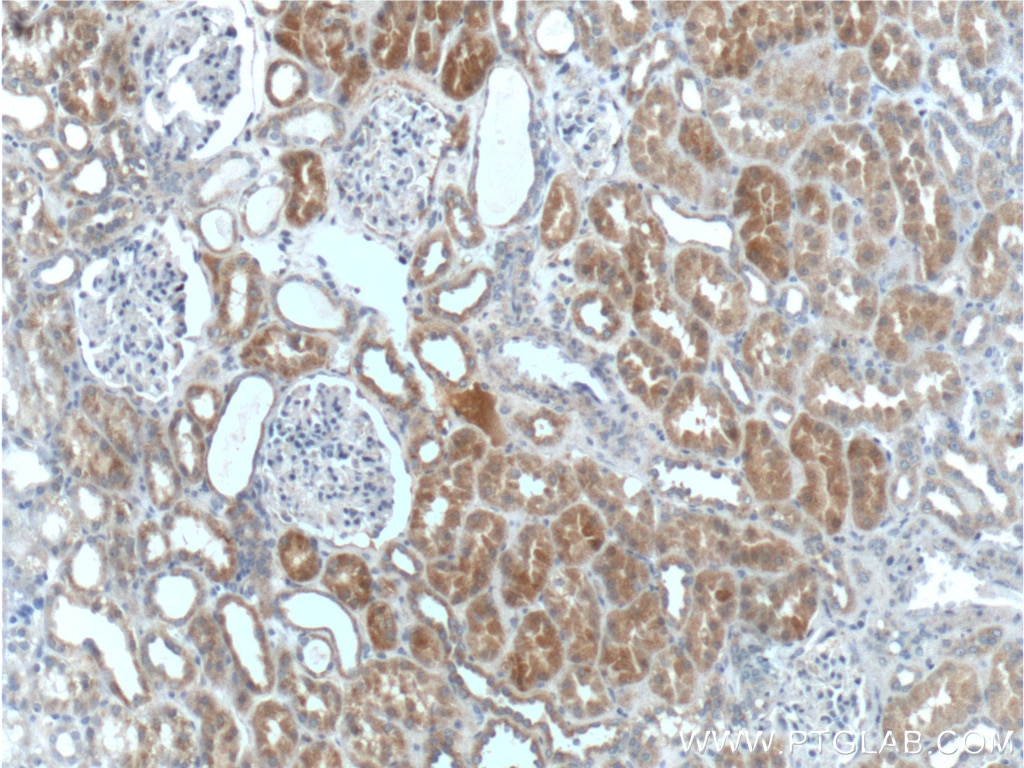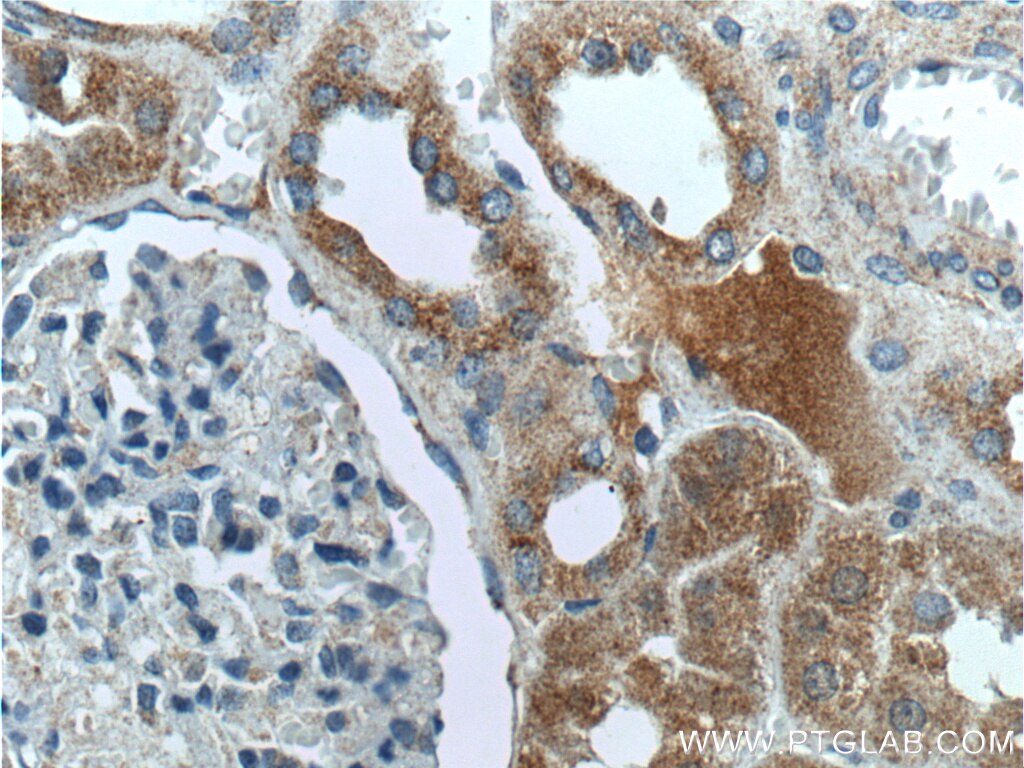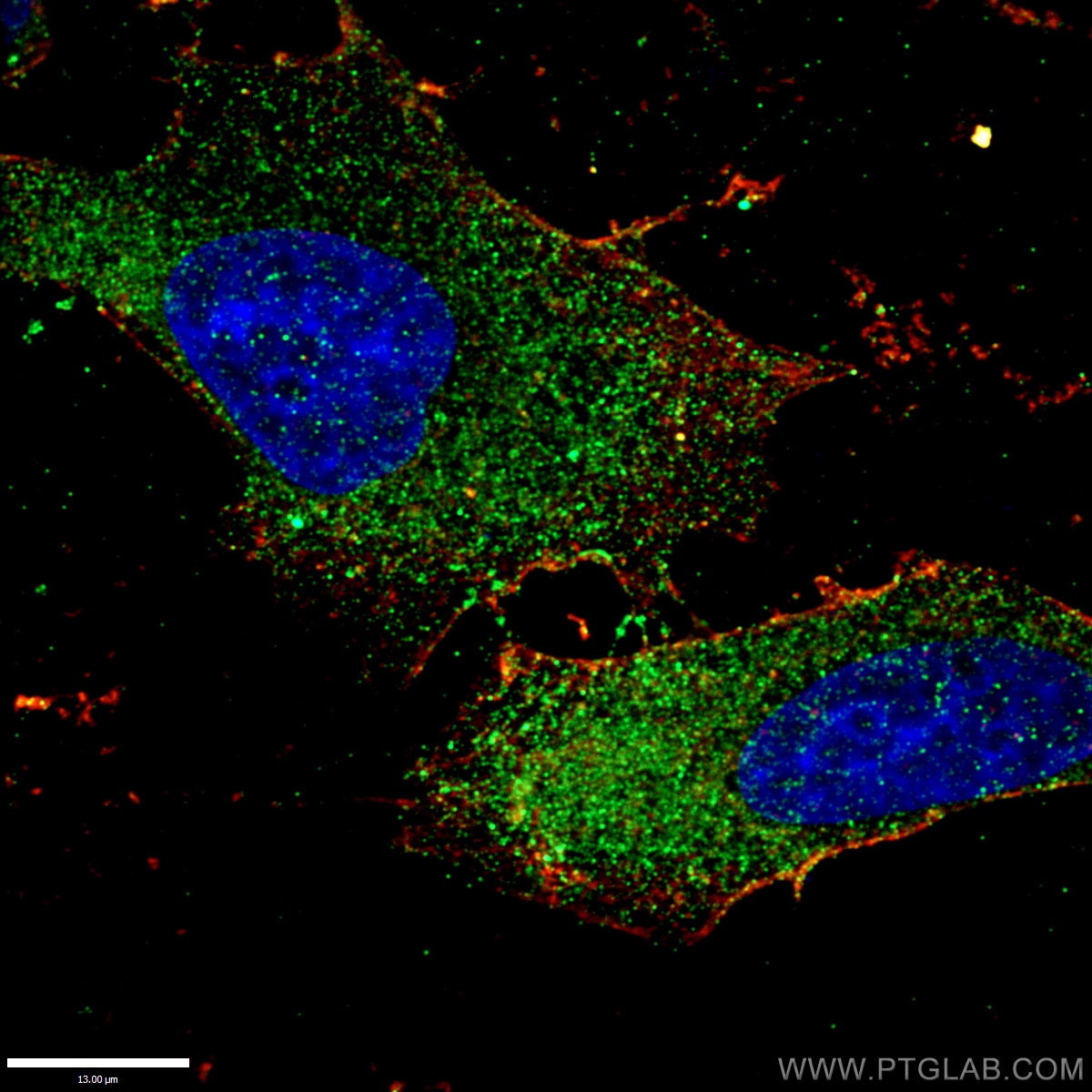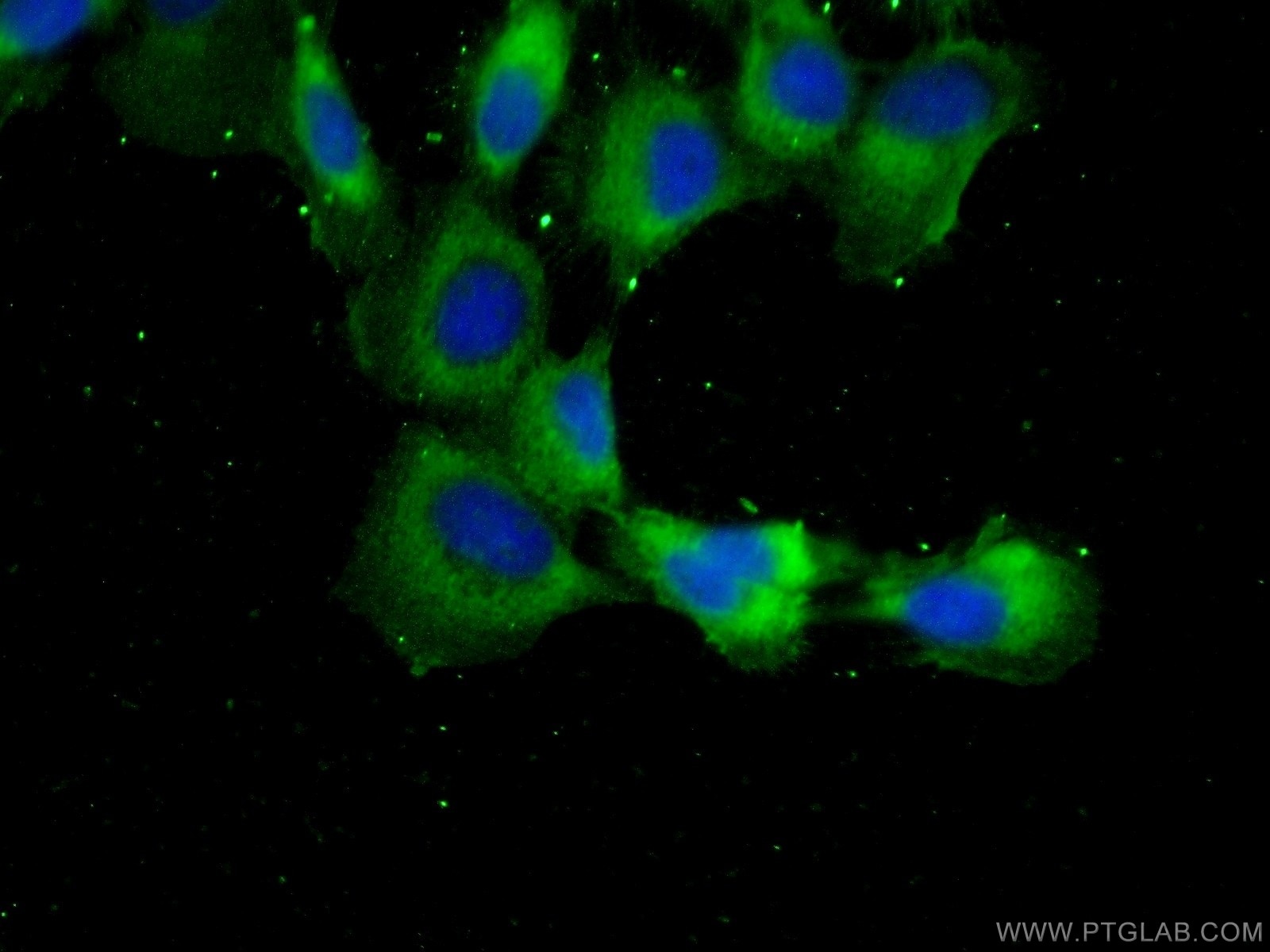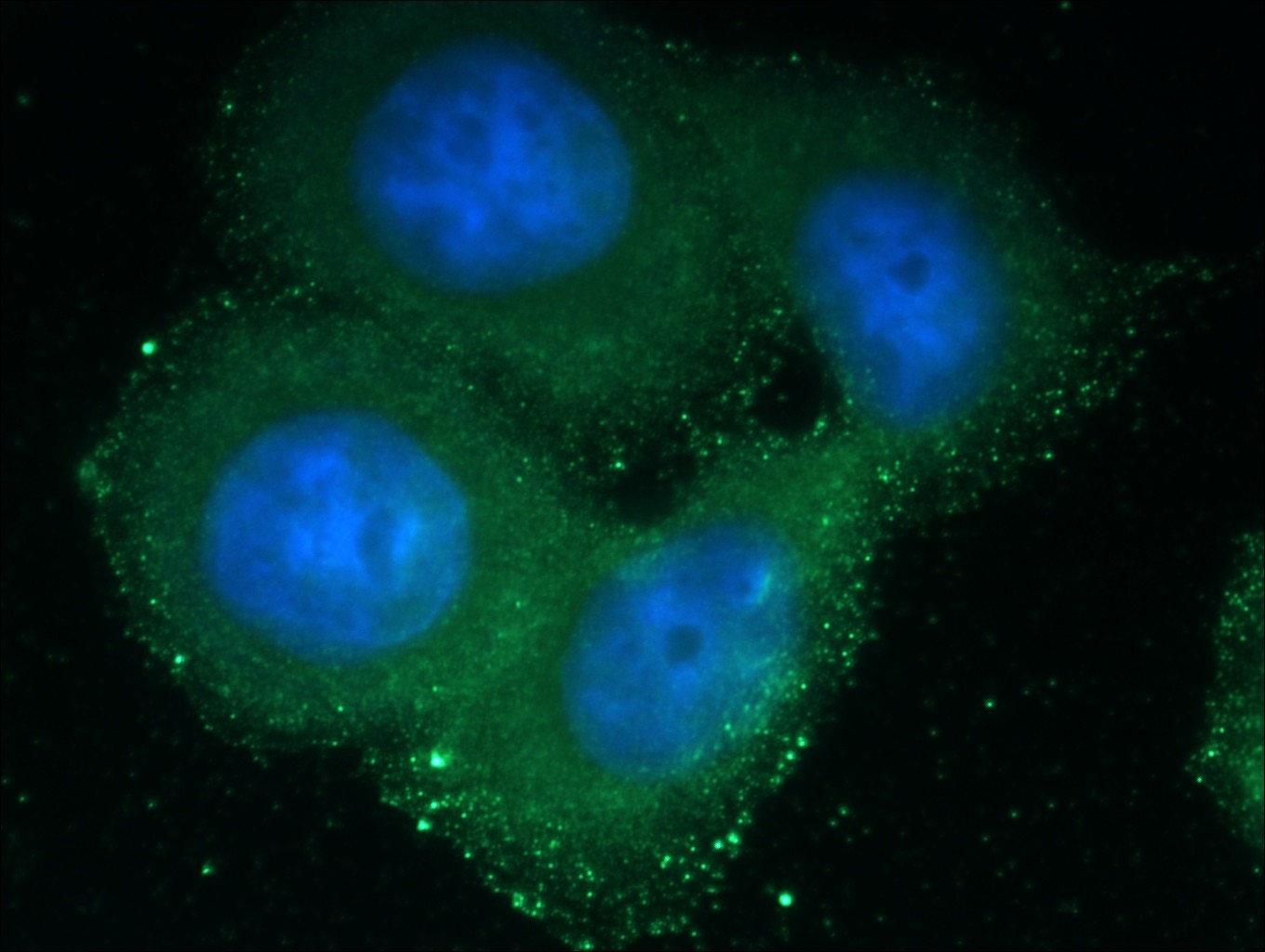- Phare
- Validé par KD/KO
Anticorps Polyclonal de lapin anti-PEX1
PEX1 Polyclonal Antibody for WB, IHC, IF/ICC, ELISA
Hôte / Isotype
Lapin / IgG
Réactivité testée
Humain, rat, souris
Applications
WB, IHC, IF/ICC, ELISA
Conjugaison
Non conjugué
N° de cat : 13669-1-AP
Synonymes
Galerie de données de validation
Applications testées
| Résultats positifs en WB | cellules Jurkat, cellules HeLa |
| Résultats positifs en IHC | tissu de cancer du foie humain, tissu rénal humain il est suggéré de démasquer l'antigène avec un tampon de TE buffer pH 9.0; (*) À défaut, 'le démasquage de l'antigène peut être 'effectué avec un tampon citrate pH 6,0. |
| Résultats positifs en IF/ICC | cellules HepG2, cellules A431, cellules HeLa |
Dilution recommandée
| Application | Dilution |
|---|---|
| Western Blot (WB) | WB : 1:500-1:2000 |
| Immunohistochimie (IHC) | IHC : 1:20-1:200 |
| Immunofluorescence (IF)/ICC | IF/ICC : 1:50-1:500 |
| It is recommended that this reagent should be titrated in each testing system to obtain optimal results. | |
| Sample-dependent, check data in validation data gallery | |
Applications publiées
| KD/KO | See 2 publications below |
| WB | See 13 publications below |
| IHC | See 1 publications below |
| IF | See 3 publications below |
Informations sur le produit
13669-1-AP cible PEX1 dans les applications de WB, IHC, IF/ICC, ELISA et montre une réactivité avec des échantillons Humain, rat, souris
| Réactivité | Humain, rat, souris |
| Réactivité citée | Humain, souris |
| Hôte / Isotype | Lapin / IgG |
| Clonalité | Polyclonal |
| Type | Anticorps |
| Immunogène | PEX1 Protéine recombinante Ag4623 |
| Nom complet | peroxisomal biogenesis factor 1 |
| Masse moléculaire calculée | 1283 aa, 143 kDa |
| Poids moléculaire observé | 143 kDa |
| Numéro d’acquisition GenBank | BC035575 |
| Symbole du gène | PEX1 |
| Identification du gène (NCBI) | 5189 |
| Conjugaison | Non conjugué |
| Forme | Liquide |
| Méthode de purification | Purification par affinité contre l'antigène |
| Tampon de stockage | PBS with 0.02% sodium azide and 50% glycerol |
| Conditions de stockage | Stocker à -20°C. Stable pendant un an après l'expédition. L'aliquotage n'est pas nécessaire pour le stockage à -20oC Les 20ul contiennent 0,1% de BSA. |
Informations générales
Peroxin (PEX) proteins generate and maintain peroxisomes. The peroxin-1 (PEX1) ATPase facilitates the recycling of the peroxisome matrix protein receptor PEX5 and is the most commonly affected peroxin in human peroxisome biogenesis disorders (PMID: 28600347). PEX1 and PEX6 are the only members of the AAA family (for ATPases associated with diverse cellular) activities implicated in peroxisome biogenesis and are closely related to p97, which functions in endoplasmic reticulum-associated protein degradation to retrotranslocate endoplasmic reticulum proteins to the cytosol (PMID: 9695811; 11740563).
Protocole
| Product Specific Protocols | |
|---|---|
| WB protocol for PEX1 antibody 13669-1-AP | Download protocol |
| IHC protocol for PEX1 antibody 13669-1-AP | Download protocol |
| IF protocol for PEX1 antibody 13669-1-AP | Download protocol |
| Standard Protocols | |
|---|---|
| Click here to view our Standard Protocols |
Publications
| Species | Application | Title |
|---|---|---|
Autophagy Export-deficient monoubiquitinated PEX5 triggers peroxisome removal in SV40 large T antigen-transformed mouse embryonic fibroblasts. | ||
EMBO J Insufficiency of ciliary cholesterol in hereditary Zellweger syndrome.
| ||
Autophagy AKT-mediated phosphorylation of ATG4B impairs mitochondrial activity and enhances the Warburg effect in hepatocellular carcinoma cells. | ||
Cell Commun Signal TFEB activation triggers pexophagy for functional adaptation during oxidative stress under calcium deficient-conditions | ||
Mol Ther Methods Clin Dev AAV-mediated PEX1 gene augmentation improves visual function in the PEX1-Gly844Asp mouse model for mild Zellweger spectrum disorder. |
